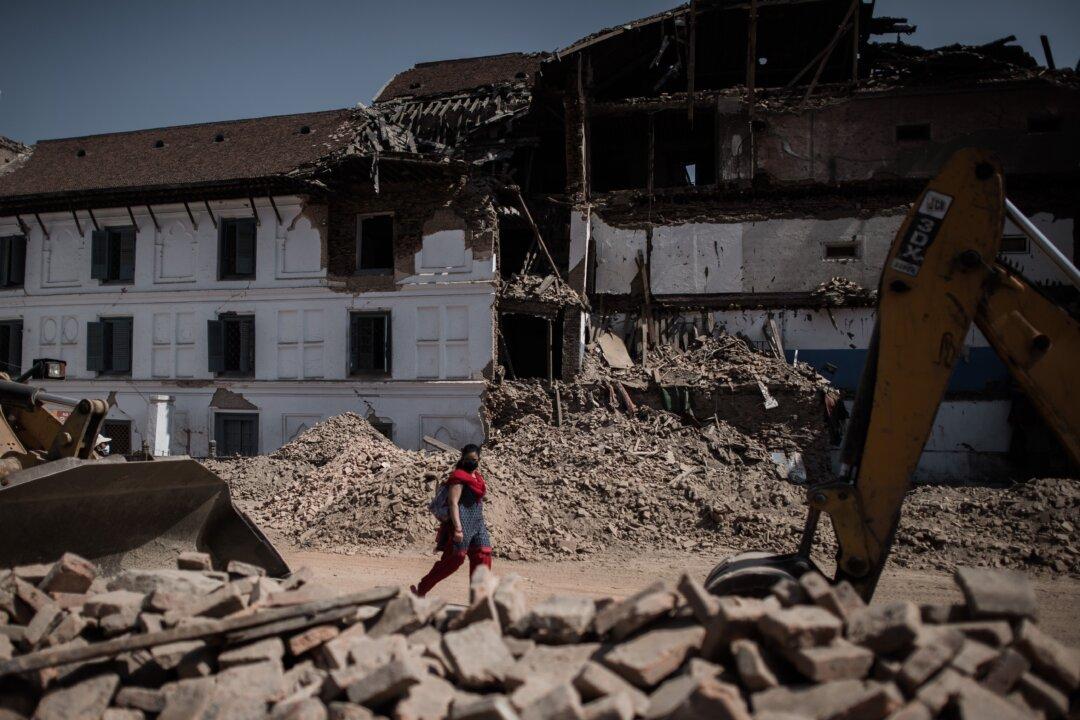The death toll from Nepal’s earthquake has now passed 7,000, and there is no telling how much further it will climb. The government and international aid agencies are scrambling to cope with the aftermath of a magnitude-7.8 quake that struck this South Asian nation on April 25.
Severe aftershocks have the land-locked country of 27.8 million people on edge, with scores missing and countless others feared dead, buried under the rubble.
With its epicenter in Lamjung District, located northwest of the capital, Kathmandu, and south of the China border, the massive quake rippled out over the entire country, causing several avalanches in the Himalayas—including one that killed over 15 people and injured dozens more at the base camp of Mount Everest, 200 kilometers (124.27 miles) away.
